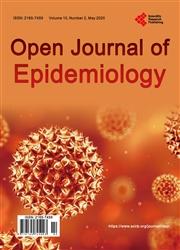The Epidemiology of Recurrent Violence and Its Relationship with Sentence Time in the Romanian Juvenile Prison System: A Two-Year Cohort Study
引用次数: 0
Abstract
Background: Research suggests that a small number of persistent violent offenders are responsible for a majority of prison violence and tend to behave violently to a disproportionate amount. However, literature on patterns of violence in juvenile prisoners is limited. Method: In order to explore how subjects engage in violence while incarcerated in the juvenile prison system, the authors will examine both proximal and distal predictors of violent behavior among juveniles in custody. This study adds to the current empirical research by longitudinally examining dynamic risk factors of recurrent violent behavior across a population of juvenile prisoners (Mage = 16.21; 94.8% male) in custody in the Romanian juvenile justice system, starting from their entry date until the end of the follow-up period (Me = 2 years). Results: Results from a series of repeated aggressive events survival analyses show evidence of a long-term deleterious association between pre-incarceration risk factors and poor developmental trajectory associated with violence. Adherence to destructive conduct in prison was consistently influenced by low ability to cope with the prison environment, although education level and family factors also mattered. Implications for prison professionals and forensic practitioners are presented. Conclusion: Recurring aggressive behavior is frequent for individuals who experience complex adverse experiences during childhood, suggesting that screening youths upon their admission into juvenile justice settings should include an assessment of their basic self-regulation needs. A greater focus on longitudinal studies may help improve the screening process and also follow the progress of each juvenile to warrant the efficacy of preventive programs in self-harm, according to their emerging罗马尼亚青少年监狱系统中复发性暴力的流行病学及其与刑期的关系:一项为期两年的队列研究
背景:研究表明,少数顽固的暴力罪犯对大多数监狱暴力负有责任,并且往往表现出不成比例的暴力行为。然而,关于少年犯暴力模式的文献是有限的。方法:为了探究被关押在青少年监狱系统中的对象是如何参与暴力的,作者将研究在押青少年暴力行为的近端和远端预测因素。本研究对目前的实证研究进行了补充,纵向考察了青少年囚犯群体中反复发生暴力行为的动态风险因素(Mage = 16.21;(94.8%男性)在罗马尼亚少年司法系统中被拘留,从他们入境之日起直到随访期结束(Me = 2年)。结果:一系列重复攻击事件的生存分析结果表明,监禁前风险因素与与暴力相关的不良发展轨迹之间存在长期有害关联。尽管教育水平和家庭因素也很重要,但在监狱中坚持破坏性行为一直受到应对监狱环境能力低下的影响。提出了对监狱专业人员和法医从业人员的影响。结论:在童年时期经历过复杂不良经历的个体中,反复出现的攻击行为是常见的,这表明在青少年司法机构对其进行筛查时应包括对其基本自我调节需求的评估。对纵向研究的更多关注可能有助于改善筛选过程,也可以跟踪每个青少年的进展,以保证预防自残计划的有效性
本文章由计算机程序翻译,如有差异,请以英文原文为准。
求助全文
约1分钟内获得全文
求助全文

 求助内容:
求助内容: 应助结果提醒方式:
应助结果提醒方式:


